
Branching Path: Josh Torres’s Top 10 Games of 2018
Time to close the book on 2018. It’s done. It’s over. We made our way through.
For me, this year’s strongest video games were about fresh ideas and intriguing approaches to established formulas. I think it was a solid year for games all-around, but there were definitely gaps on my end where nothing new was really gripping me. Nonetheless, it’s a weird time for games; we all know that this generation’s days are numbered. We’re reaching the tail-end to an amazing era of gaming. Video games in 2018 were pretty rad.
I wish I got to put more time in longer games like Dragon Quest XI: Echoes of an Elusive Age and Valkyria Chronicles 4. Like always, I only put games I’ve spent a substantial amount of time on and/or completed on this list.
Several games that barely didn’t make it but I still wanted to shoutout include: Soulcalibur VI, WarioWare Gold, Bloodstained: Curse of the Moon, Super Smash Bros. Ultimate, GRIS, and Super Robot Wars X. These are all fantastic; I love them all for different reasons. It wasn’t easy cutting them. I stared at my list for what seemed like an eternity before letting go.
Here’s my list. These are some of the cool games worth checking out that came out this year - in my opinion.
10) Octopath Traveler
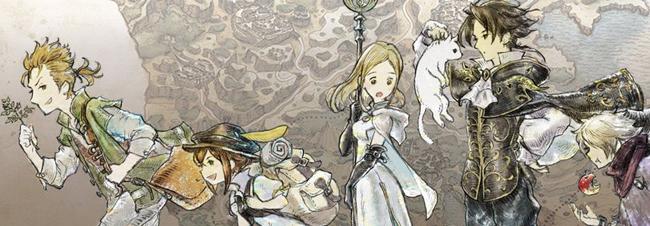
Octopath Traveler is just lovely. There’s a charm and flow to it that certainly brings me back as it presents itself in a very striking way. Its self-proclaimed “HD-2D” style works well; I wish my favorite old JRPGs received updated releases looking like Octopath. Of course, not everything worked for me as I mentioned in my review for it. There are undoubtedly severe flaws to its narrative structure when all is said and done, but it has laid a great foundation that a sequel could improve upon. Octopath’s combat system and soundtrack were the key highlights for me. I do love Octopath Traveler and I truly hope it gets the chance to realize its potential one day with a follow-up.
9) Xenoblade Chronicles 2: Torna ~ The Golden Country
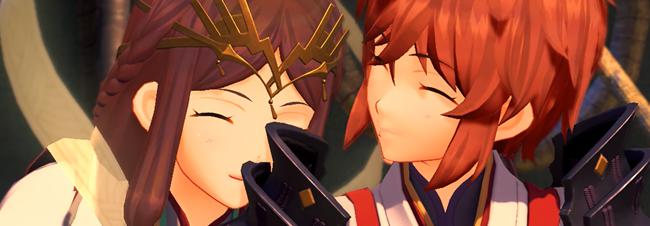
I adored Xenoblade Chronicles 2 and Monolith Soft’s ongoing support for it throughout 2018 has been awesome. Its story expansion is an intriguing addition on top of it all. XC2 Torna is a prequel that does a fantastic job filling in substantial puzzle pieces that set forth the events of the base game. Even though I felt XC2 felt relatively complete, Torna goes the extra mile and was a great reminder of why I loved XC2. Its odd decision of gating story progress through mandatory sidequesting did bum me out, but the enhancements to its gameplay flow and character interactions kept me quite happy. Also, the whole final boss sequence still makes me excited thinking about it. What a cool fight.
8) Celeste

Celeste is one of those games that’s easy to dismiss at first glance because it resembles so many other indie games when you first look at screenshots and quick clips of it. I totally get why people may have passed on this. To me, Celeste is truly greater than the sum of its parts. Sure, it’s a tight 2D platformer that feels extremely good to control. Sure, it has an abundance of fantastic level designs and a brilliant score to boot (mmmm those remixes in the B-sides).
The reason it shines for me is because its tale caught me off-guard in a pleasant way. Celeste manages to highlights its themes of overcoming and working through mental illness endearingly without being heavy handed about it. There were many ways it could have severely faltered in tackling these topics, but it succeeds in conveying them earnestly head-on. Plus, it’s one of the few titles this year that nails accessibility options without repercussions to them. I was surprised by how much Celeste stuck with me.
7) Tetris Effect

I feel strange putting this on my list because well… it’s freakiin’ Tetris but man it is some extremely good Tetris. What makes Tetris Effect special above recent Tetris releases is everything surrounding it. The gameplay is what it is; I’ve always liked how Tetris used to be many years ago, but modern Tetris didn’t quite click with me until Tetris Effect. I don’t own a PSVR so I can’t speak to how the VR experience goes, but few games this year really got me going as much as this did. It was easy for me to sink hours into Tetris Effect unknowingly; its unification of audio and visual design dressed with feelings of optimistic unison are uplifting in times that I needed a bit. The adventure mode is an intensely delightful trip, since the speed of your pieces matches in sync with the harmony. Every single move, drop, and line clear have their own chimes that compliment the current track playing. A relatively light progression system and weekend events will keep me coming back to this for awhile. I didn’t think I’d come into this year having Tetris as one of my favorites again, but here I am T-spinning my mind off.
6) Dead Cells
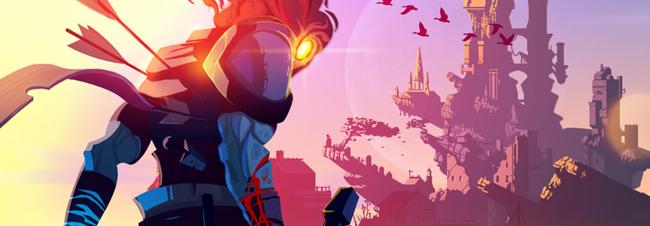
This was one of my early access darlings from 2017 that finally got released this year. Dead Cells is an outstanding action game that keeps me actively engaged as soon as I start playing it. Ten minutes feels like a long time in it because every single second counts - whether you’re speedrunning levels to access those time-limited doors or playing cautiously since you’re one hit away from death. The thing that sticks out to me is how flexible and accommodating Dead Cells is when it comes to gameplay style and preference. Every person has their favorite sets of weapons, abilities, and tools that they’ve made work for them. On the other hand, there are playstyles that I’ve traditionally disliked that I found myself enjoying in this game. It can be brutal, but it’s fair; every time I die, it’s completely my fault and I learn from it to try again. Even in its early access days, Dead Cells was already a game I loved and it’s only gotten better and more polished.
5) Marvel’s Spider-Man

Spider-Man has had a stupendous 2018 in films and especially his new PS4 game. It’s been a hot minute since the last truly great Spider-Man video game and it knocks it out of the park way beyond what I expected. While I still slightly prefer the freeform nature of the PS2 Spider-Man 2 game, Marvel’s Spider-Man is a solid #2 on the best web-slinging in a game list for the web crawler - and that’s no easy feat to achieve. While it may not be the best in that aspect, it’s undoubtedly the best combat system a Spider-Man game has had for me. It borrows a lot from the Batman Arkham games, but Spider-Man’s nimbleness really amps up the tempo and mobility options. One of my favorite early moments was knocking a guy off the side of a building, web-zipping towards him to knock a few more punches and web balls in, and stylishly web-rebounded back into a perch point. It felt incredible.
It was amazing to see that the story beats and presentation were top-notch as well. The honesty in Peter Parker’s portrayal of being a hero at the cost of his own life’s social standing, social relationships, and social circumstances is a remarkable thing to see unfold. I came for the Spider-Man gameplay but by the end, I realized I stayed for the story from both the forces of good and the forces of evil. There’s a lot of heart and passion in Marvel’s Spider-Man that blew me away.
4) Slay the Spire
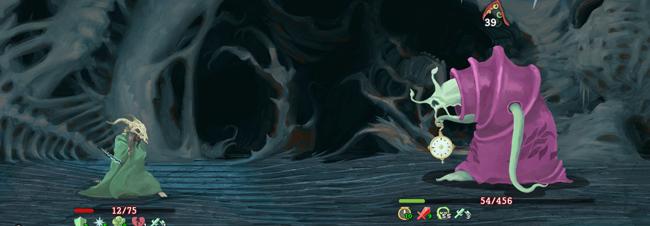
This one snuck up me. It’s still in early access, but it feels complete already - much like Dead Cells last year. Guess this means I’m allowing early access titles to sneak into my top 10 moving forward and I’m cool with that. I heard so many good things about Slay the Spire from several friends, but I dived into it later than most. It’s a run-based deck-building card game with a turn-based battle system that’s akin to a JRPG in some aspects. There’s one of three different characters you can choose from that fit the warrior, thief, and wizard archetypes that all vastly differ from one another in how they approach combat. Each of them has a base pool of basic cards they can all use and unique cards that only show up for their respective class during a run.
I won’t go into the minute details of it all, but it’s an exhilarating game with layers upon layers of strategic depth and approaches. It’s the most mental math I’ve had to do in a 2018 game. Classes can level up which unlock access to new cards that can show up in future runs, a progressive difficulty level that you can ramp up for each completion, and daily challenges that spice up how you play. All of these elements make Slay the Spire feel like a wholesome experience even though it’s technically still in development. It’s a blast that’ll absolutely keep me coming back for more. I’m excited for what the future holds in this one.
3) Monster Hunter: World

It finally happened. Monster Hunter took over the world early into the year. Of course, Monster Hunter has always dominated Japan but I think it didn’t fully click and resonate in the west until World. Capcom took a crazy big risk and it paid off in spades - rightly so. Monster Hunter: World was the Monster Hunter game a lot of people were waiting for; a proper Monster Hunter game built from the ground-up on this generation’s most powerful gaming consoles with a lot of needed quality-of-life improvements to make it more palatable to the masses. Despite its fumbles with several mind boggling decisions surrounding the early goings of multiplayer, Monster Hunter: World just knocks it out of the ball-park overall. It’s beautiful. It’s thrilling. It’s fun to play.
The last time I really sunk any substantial amount of time into one of these was Monster Hunter Freedom Unite on the PSP, so it’s been practically a lifetime since I played a Monster Hunter. This is easily my favorite multiplayer game of the year. I’m super stoked for the Iceborne expansion coming later next year. It’s still a tad surreal to see how successful Monster Hunter: World sold and how feverishly people are talking about it these days. Bow for life. I swear I’ll learn hunting horn for real one day.
2) 428: Shibuya Scramble

A long-awaited localization almost a decade in the making - 428: Shibuya Scramble rules.
There are very few things I’ve played that’s quite like it. The core adventure in 428 is entirely presented with live-action photos and actors telling a gripping tale full of adventure, comedy, action, and even some sprinkles of horror. Its story is told primarily through five different protagonists on the aftermath of a sting operation gone horribly wrong. 428’s story is strong because it’s not just a crime drama; it knows when to let its characters breathe and when to have fun. Some of the best moments in 428 for me were the ongoing minor subplots running concurrently to the investigation. My man Kano has to meet his fiance’s dad, but has to keep putting it off because being a detective is hard.
Beyond that, 428: Shibuya Scramble is full of fun bad endings. Not all of them are quirky, but just enough to make me cackle at several points. It knows how to please its readers; it does the smart thing of dividing up almost all of its story sections into one-hour blocks, so readers will have an easier time navigating what decisions they screwed up and correct course. The production behind 428: Shibuya Scramble is magnificent. It totally nails what it’s going for and I hope more people get the chance to read it. If you’re interested in what I had to say about it, I gave it a perfect score in my review several months ago.
1) Into the Breach
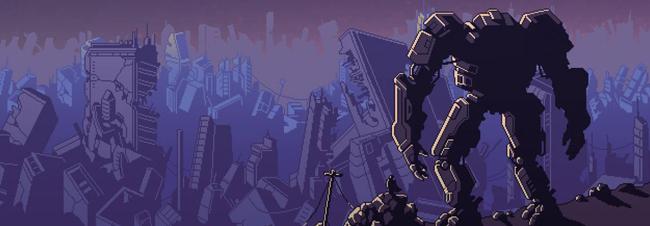
FTL: Faster than Light was a damn fine game. It suffered a little because its final boss sucks, but I love FTL. When I heard its creators were making a new game, I was already on-board.
Then boom, here’s their new game. It has mechs. It has tactics. Alright, you got me.
To me, Into the Breach is masterpiece of tight game design. It has set rules that apply to every single piece, regardless of ally or enemy, on the board. The game doesn’t overextend past the limitations it sets for itself; it’s not a sprawling open world filled with a chaotic mish-mash of progression bars and meters. Much of its interface and subsystems take cues from FTL and refines them elegantly.
The real charm of Into the Breach is that its take on tactics is more akin to chess’s approach. You know the exact turn order and moves every single enemy intends to make when it’s their turn. It’s up to players to decide how they’ll navigate through potentially catastrophic situations with their team of three giant robots and after a certain point, they’ll develop an awareness of logic sequences. If this happens, then this’ll happen, which will trigger that thing to happen, but these spaces will also be affected by the environment next turn too, so I have to take that into account as well - can I mitigate my losses, can I risk this, or is it checkmate? Both Into the Breach and Slay the Spire shared a common ground for me in which I felt like a genius one moment and then a complete idiot in the very next second.
I also enjoyed that Into the Breach tries to contextualize its run-based nature. It has a whole insane subplot of sending its top pilots back in time to try and prevent apocalypse once more from nightmarishly huge bugs overtaking humanity, so that’s why you can “save” a pilot after failure. Each of the robot teams all play their own unique way that do tremendous jobs in pushing players to approach combat creatively. After all, the main persistent objective throughout Into the Breach’s stages isn’t about killing everything - it’s surviving a set amount of turns. Nothing this year came close to the sheer intensity of overcoming overwhelming odds in a single turn by staring at a tileset for 20 minutes in silence. I can go on and on about Into the Breach, but it explains itself best when it’s played. Into the Breach is undoubtedly my favorite game of 2018.